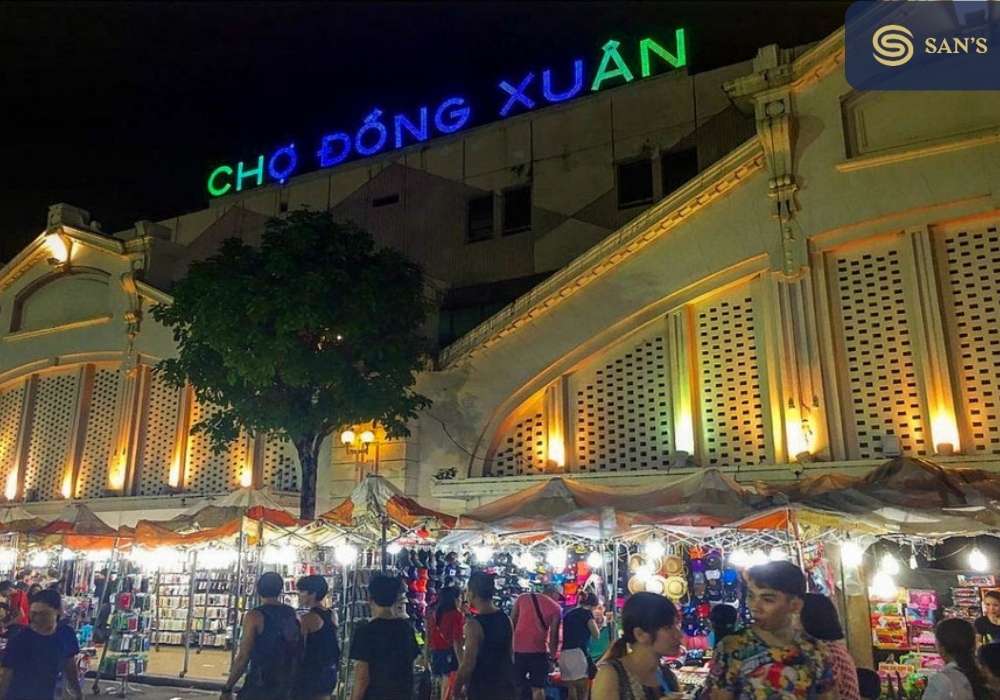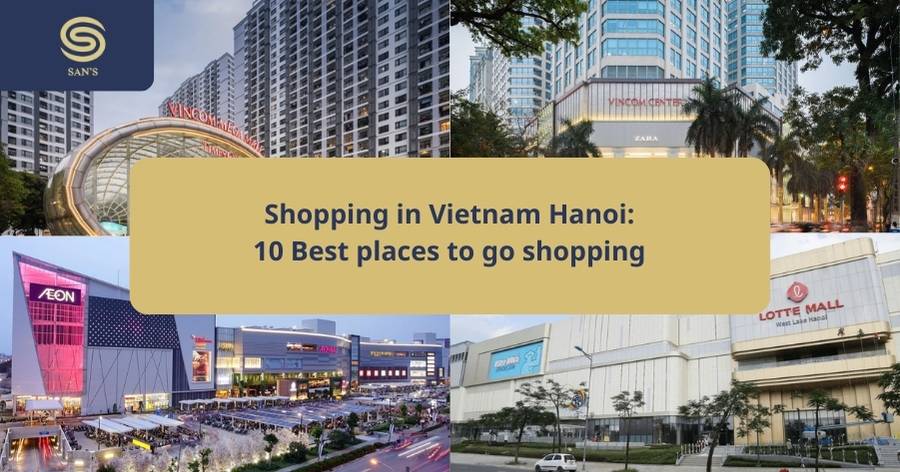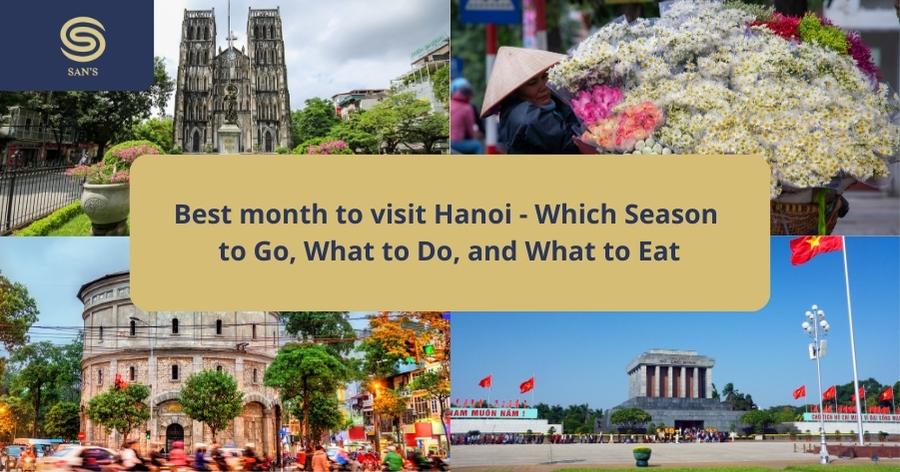Across Vietnam, street markets are the lifelines of daily life, epitomizing the nation’s culture and communal spirit. However, it’s the Hanoi street markets that truly stand out, offering a unique blend of tradition and modernity. These markets, deeply rooted in Vietnam’s history, showcase a vibrant dance of colors, aromas, and sounds, acting as living museums narrating the capital’s rich past and dynamic present.
The History of Street Markets in Hanoi
The intertwining lanes and alleys of Vietnam have always been alive with the hum of trade and commerce. Long before the era of glitzy malls and online shopping, it was the street markets that formed the epicenter of Vietnam’s economic and social activities. Their evolution speaks volumes about the resilience and adaptability of the Vietnamese people, who, over centuries, have shaped and been shaped by these bustling hubs.

Historically, the rise of street markets in Vietnam was closely tied to the development of its agrarian society. Farmers from the outskirts would journey into urban areas, setting up makeshift stalls to sell their fresh produce. Over time, as urban centers like Hanoi grew, these once sporadic gatherings transformed into more permanent fixtures. They began encompassing not just food, but also textiles, pottery, and an array of handicrafts, reflecting Vietnam’s diverse artisanal traditions.

Hanoi street markets, in particular, have a unique place in this historical tapestry. Being the capital, Hanoi has always been a melting pot of cultures, ideologies, and trades. The city’s markets, therefore, have not only been places of commerce but also of cultural exchange. One can trace back Hanoi’s history of invasions, occupations, and reconstructions through the products and architecture of its markets. From French colonial influences evident in the architecture of some market buildings to Chinese-inspired merchandise, Hanoi’s markets offer a vivid and tangible reflection of its layered past.
Top Hanoi Street Markets to Explore
Hanoi’s landscape is dotted with myriad marketplaces, each carrying its distinct charm and offerings. For both the discerning shopper and the curious traveler, these are more than just places to buy goods – they are windows into Hanoi’s vibrant culture and history. Here are some of the standout markets you shouldn’t miss:
- Dong Xuan Market: Tucked away in the heart of the city, Dong Xuan stands as Hanoi’s most iconic and largest indoor market. With a history spanning over a century, it’s a buzzing hive of activity from dawn to dusk. As you meander through its vast corridors, you’ll be greeted with an assortment of items ranging from colorful textiles and intricate handicrafts to fresh produce and seafood. Whether you’re hunting for the perfect souvenir or just soaking in the ambiance, Dong Xuan offers an authentic slice of Hanoi’s market life.

- Night Market in the Old Quarter: As the sun dips below the horizon, the streets of Hanoi’s Old Quarter transform into a lively night market. Lantern-lit stalls line the roads, offering everything from fashionable apparel to handcrafted jewelry. But what truly sets this market apart is its gastronomic delights. Street food stalls here are aplenty, serving up local favorites like ‘Bun Thang’ and ‘Nem Ran’. Amid the chatter of vendors and melodies of street performers, the Night Market promises an unforgettable nocturnal adventure.

- Bat Trang Ceramic Village Market: A short ride from the city center will take you to Bat Trang – a village renowned for its ceramic mastery. The market here is a testament to Vietnam’s rich pottery traditions. Rows upon rows of stalls display beautifully crafted ceramic items, from intricate vases to decorative plates. As you wander around, you’ll also find workshops where you can witness artisans at work, molding and painting these ceramic wonders. For those keen on hands-on experiences, some studios even offer pottery classes!

- Others: Hanoi’s market scene is vast and diverse. Beyond the ones mentioned, there are several other gems worth exploring. The Hang Da Market, known for its leather goods and second-hand clothing, and Cho Hom Market, famous for its extensive range of fabrics, are just a couple more to add to your itinerary. Each market in Hanoi, no matter how big or small, tells its own unique story and offers a special experience.
Venturing into these markets is more than just a shopping expedition; it’s a journey through Hanoi’s rich tapestry of history, culture, and commerce. Happy exploring!
Practical Information for Travelers
Exploring the bustling world of Hanoi street markets is an experience every traveler should embrace. However, to ensure a smooth and rewarding journey through these commerce hubs, it’s vital to be equipped with some practical knowledge. Here’s what you should know:
- Best Times to Visit the Markets:
- Morning Rush (7 am – 9 am): This is when fresh produce arrives, and the markets are buzzing with locals making their daily purchases. It’s an authentic experience, but it can be crowded.
- Late Afternoon (4 pm – 6 pm): As the day’s heat starts to wane, many markets come alive again with locals coming in for evening shopping.
- Night Markets (from 7 pm onwards): Exclusively for certain markets like the Night Market in the Old Quarter, this is when you can experience Hanoi’s nightlife blending seamlessly with its market culture.

- Payment Methods:
- Cash: Vietnamese Dong (VND) is the preferred and most widely accepted currency at street markets. Always carry smaller denominations to facilitate easier transactions and bargaining.
- Digital Payments: While traditional stalls predominantly operate on cash, the rising trend of e-wallets and mobile payments has started to seep into the market scene. Apps like Momo or ZaloPay are becoming increasingly popular. However, it’s always safer to ask the vendor beforehand if they accept digital payments.
- Navigating Language Barriers:
- Learn Basic Phrases: Equip yourself with some essential Vietnamese phrases. Simple words like “Xin Chào” (Hello), “Cảm ơn” (Thank you), and “Bao nhiêu?” (How much?) can go a long way in facilitating smoother interactions.
- Use Technology: Translation apps can be invaluable. Google Translate, for instance, offers a camera function that can translate written text in real-time – perfect for reading signs or labels.
- Gestures and Non-verbal Communication: When words fail, gestures come to the rescue. Pointing, showing numbers with fingers, or using a calculator to display prices are common methods vendors use to communicate with tourists.

FAQs about Hanoi Street Markets
Navigating through the bustling lanes of Hanoi street markets can be both an exciting and daunting experience for many tourists. Here are answers to some frequently asked questions to make your journey smoother:
- When do Hanoi street markets typically open and close?
- Most Hanoi street markets start as early as 6 am or 7 am, catering to early morning shoppers, and wrap up by late afternoon, around 5 pm or 6 pm. However, certain night markets in Hanoi, like the one in the Old Quarter, spring to life around 7 pm and continue until midnight.
- Is bargaining a common practice in Hanoi street markets?
- Yes, bargaining is an essential part of the shopping experience at Hanoi street markets. Approach with a friendly attitude, and you might just snag a great deal!
- Are the foods sold at Hanoi street markets safe to eat?
- Street food is a highlight of Hanoi street markets. While many stalls are hygienic, it’s a good rule of thumb to eat where you see locals eating. These places are often trusted and serve fresh, tasty dishes.
- What unique finds await me in Hanoi street markets?
- The Hanoi street markets are treasure troves of traditional Vietnamese goods. From locally crafted silk, bamboo products, and ceramics to an array of handicrafts, there’s something for every traveler’s taste.
- What if I don’t speak Vietnamese? How do I communicate in Hanoi street markets?
- While Vietnamese is the dominant language, many vendors at Hanoi street markets understand basic English phrases, especially related to shopping. Additionally, using translation apps or simple gestures can be very effective.
- Are there any particular customs or etiquettes I should follow in Hanoi street markets?
- When shopping at Hanoi street markets, politeness is always appreciated. A smile, friendly bargaining, and asking for permission before taking photos are generally good practices.
- Can I use foreign currencies in Hanoi street markets?
- While the primary currency is Vietnamese Dong (VND), some vendors at Hanoi street markets might accept popular foreign currencies like USD or Euros. However, to avoid confusion and ensure correct change, it’s recommended to use VND.





